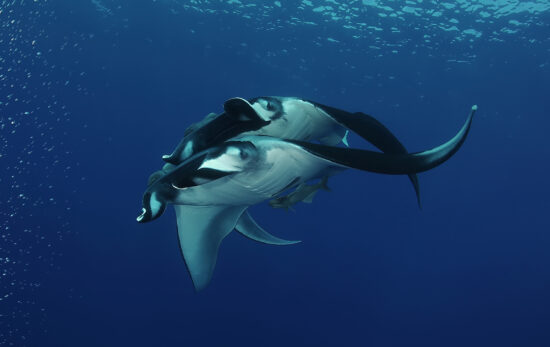 Online Scuba Lessons |
 Online Nitrox Lessons |
Sea Sickness
And the Hurls that Follow!
My experience with seasickness is that at first your are afraid that you might die, then after a few hours of it, you're afraid that you might live!
Seasickness, or motion sickness, makes dive trips eventfully, to say the least. A lot is known about motion sickness, but total understanding of the cause is not clear. There are individuals that who seem immune to the dreaded hurls. But sufficient angular acceleration will induce motion sickness in anyone. Everyone is susceptible, and motion sickness can be produced in anyone if the circumstances are right - some people are just less susceptible than others.
If you have experienced motion sickness, you probably think of it as primarily nausea. One theory says that this symptom is the result of your brain's inability to resolve the conflicting signals that it is receiving from the ears, eyes, and body.
There are several semi-circular canals and tubes inside of the middle ear that provide the brain with signals and air space as well as liquid space that together provide balance. This system is called The Vestibular Balance Apparatus. This system of the ears detects motion and is stimulated by the repeated angular acceleration of the dive boat. If you are in a compartment or have lost visual contact with the horizon, your eyes signal the brain that there is no motion while the Vestibular system signals the brain that there a lot of motion and the motion is accelerating and decelerating and accelerating in the opposite direction. Then to top things off, your brain gets more signals from your body position changing. Your brain receives conflicting signals, is unable to resolve the signals, and begins to purge - the dreaded hurls appear on the scene.
Once the brain has decided that all these sensory inputs are to much to handle, it's impossible to cure. Although after some time at sea (say 5 to 6 hours) the brain begins to process the signals and seasickness subsides. In other words, the body adapts and overcomes.
After you have finished that live aboard trip and have stepped onto solid ground, you may feel funny and maybe even sick again - I call it the "Wobbles". The official name for this is Mal De Debarquement. This occurs when you return to dry land after become adapted to an environment in constant motion. Your brain has become accustomed to the new input from increased motion. Suddenly, the motion stops. The abrupt change will promptly produce the same symptoms as originally felt upon going to sea.
Motion is the most of the story, but not all. Emotional factors (fear, anxiety, fatigue) act in concert with motion to precipitate an attack.



Ok, so what do we do about it. We know that
there is no cure for it, what about prevention?
First, you should be adequately rested, nourished and
hydrated. If you are apprehensive about the dive and boat
trip, avoid placing anything at all in your stomach at least two
hours before you leave the dock. You will be more
comfortable with nothing in your stomach than if you were full
of food ('cause it won't be full for long!). Adequate rest
and hydration means that you have essentially recovered from jet
lag, excessive food, and excessive alcohol, and have satisfied
your usual requirement for sleep.
After boarding, prepare your gear for diving before the boat reaches open water so that you can avoid working on dive equipment while looking down. Find a place on the boat where the motion is least and stay low. Avoid the bow, flying bridge or upper decks where the motion is intensified. All by all means, never never go into the bunk room or head. These areas are sure to produce that welling up feeling. The motion at the stern is no to bad, but sometimes the exhaust fumes create the need to hurl.
Take some "Triptone" or "Seacure" or "Bonine" at least two hours before the boat trip. Remember, prevention is cheap and the cure is expensive.
One last side note - If and when you do end up getting seasick - NEVER, never, never use the head to vomit. It causes a chain reaction throughout the entire boat. Although your pride may be hurt and it isn't very macho - use the side or stern to hurl your guts...
Sea ya on the next dive boat...
Bwana
![]()